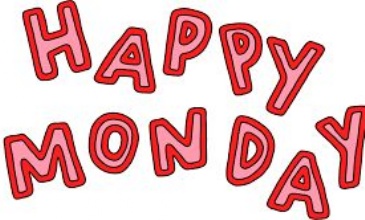Monday 15th June 2020

Hello everyone, I hope you had a lovely weekend!
Maths I can partition numbers into tens and ones (10s and 1s).
First, recap your number bonds to 10 and 20 using the sheet attached below (make 10 and 20). Just do Set A today (on the left) and save Set B for tomorrow. Or You may have some left over from last week’s sheets. Feel free to continue with them.
Next, watch this video where a teacher shows us how to ‘partition’ numbers in to 10s and 1s.
Partitioning means to separate https://www.youtube.com/watch?v=eJOK5uwJ_Xw
Then follow the PowerPoint Partitioning numbers and complete the Problem solving, reasoning and varied fluency activities.
If you want more, partition these numbers in to ‘T’ 10s (tens) and ‘O’ 1s (ones)
54 67 12 99 43 44 72 85 31
English
Get comfortable. I am going to read you The Jolly Postman and Other People’s Letters by Janet and Allan Ahlberg.
You will need a note pad, something to write on or your exercise book. As you listen to the story, I would like you to make a note of as many ‘Traditional Tales’ that you notice included in this story. The authors have included lots of characters from popular tales, also called ‘Fairy Tales’. You might notice Cinderella and The Three Little Pigs. Who else or which other stories do you notice?
https://vimeo.com/428785678 Also see the book attached below as a PDF, for if you would prefer to read it yourself or you may have the book at home to read. If you watch the video, feel free to pause it at any point to focus on the pages or give yourself time to take notes.
RWI
https://www.youtube.com/channel/UCo7fbLgY2oA_cFCIg9GdxtQ
All videos are released at 9:30am and will be available for 24 hours only.
If you are unsure about which set to follow please don’t hesitate to email to ask and I will guide you isla.aitken@ramsgateartsprimaryschool.co.uk
Note: Please feel free to attempt the English tasks above on occasion too.
Set 1
Focus sound: ‘c’ for caterpillar
Spellings
1) clock 2) cabs 3) carrot
Sentences
1) Check the clock.
2) Count the carrots.
Set 2
Focus sound: ‘ou’ as in ‘Shout it out!’
Spellings
1) county 2) amount 3) ground
Sentences
1) Count the amount of shells you found.
2) I have about three pounds in my house.
Set 3
Focus sound: ‘ow’ as in ‘Brown cow’ (Plus reading longer words – ‘ire’)
Spellings
1) trowel 2) flower 3) frown
Sentences
1) Turn that frown upside down and smile.
2) There is a clown in my town that has a flower in her hat.
Helpful links for parents and carers https://www.ruthmiskin.com/en/find-out-more/parents/
And don't forget Miss Spurrier’s speed sounds for extra practice (accessible at any time as an option)
RWI Set 1 sounds https://vimeo.com/414752875
RWI Set 2 sounds https://vimeo.com/414764363
RWI Set 3 sounds https://vimeo.com/414761386
Red words
Level 1 Red words: https://vimeo.com/417611100
Level 2 Red words: https://vimeo.com/417629553
Level 3 Red words: https://vimeo.com/417645041
Topic - I know the difference between a country, city, town and village. https://vimeo.com/429005849 password Year 1
Recap: What are the four countries of the UK?
Today and tomorrow I would like you to think about the differences between countries, cities, towns and villages.
Here are the names of some cities that you will have heard of and you may even have visited one or two;
London
Canterbury
Edinburgh
Liverpool
Manchester
Can you remember the capital cities of the four countries in the UK?
Cities are often busy places with lots of people, attractions (shops, museums, famous land marks), buildings and transport (like cars, busses, trains). Some cities around the world, like London have underground trains. Cities are often described as ‘urban areas’ which means a lot of buildings and structures have been man made. Lots of people live in cities where as the ‘population’ (number of people) that live in towns and villages is usually less. A town is usually smaller than a city but larger than a village. Ramsgate, Margate and Broadtstairs are towns. Somewhere like Manston (near Ramsgate) or Wingham (near Canterbury) are villages. Villages are generally in ‘rural areas’ which means they are surrounded by countryside (like fields and forests) which means it’s very green and leafy and more has natural landscape. Villages don’t have lots of people, tall buildings or a lot of transport so they tend to be quieter.
Your task today is to write about what it is like living where you live. Include which country (England) and which town or village you live in. Describe what living there is like; is it busy, quiet, near the seaside, in the countryside? Do you have shops and attractions near by and how do you travel around (walking, car, bike, bus or train – when it’s safe). Then describe a time you visited another place; a village (somewhere you do not live) or a city like Canterbury or London. You may have visited another country. Tell me about the place you visited there. Can you tell whether it was a city, village or town? Describe it’s features and what it felt like being there.
Or
Create or draw a table with 4 headings; Country, City, Town and Village.
Under each heading write words that you know describe each place. You may like to write the name of a place, this might make it easier to describe.
E.g.
|
Country |
City |
Town |
Village |
|
|
Canterbury |
|
|
|
|
Big Cathedral |
|
|
|
|
Lots of restaurants |
|
|
